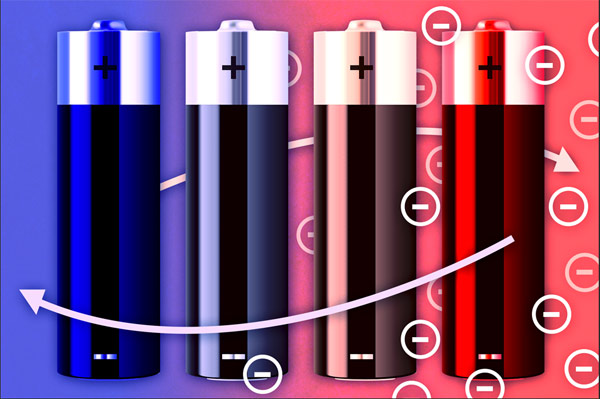
Stanford and MIT researchers have developed a four-stage process that uses waste heat to charge a battery. First, an uncharged battery is heated by waste heat. Then, while the battery is still warm, a voltage is applied. When fully charged, the battery is allowed to cool, which increases the voltage. Once the battery has cooled, it actually delivers more electricity than was used to charge it.